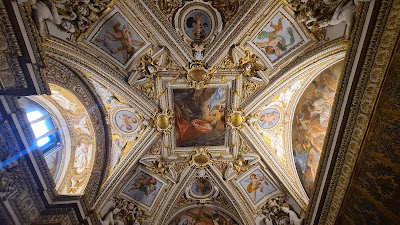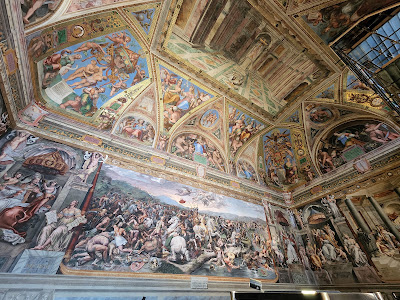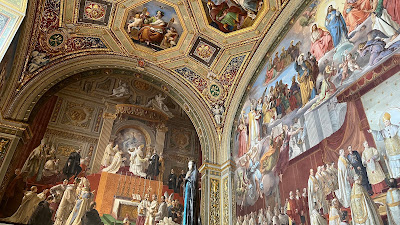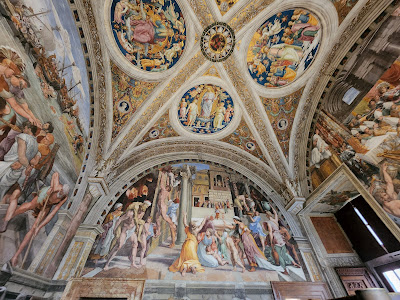Sistine Chapel

Introduction
Tucked within the Apostolic Palace in Vatican City, the Sistine Chapel is one of the most awe-inspiring artistic and spiritual landmarks in the world. As part of the Vatican Museums complex, it welcomes millions of visitors each year who come to admire its breathtaking frescoes and immerse themselves in centuries of religious and artistic history. For those traveling to Rome, a visit to the Sistine Chapel offers an unforgettable experience, combining grandeur, devotion, and the genius of some of the most revered artists of the Italian Renaissance.
Originally built in the fifteenth century under the direction of Pope Sixtus the Fourth, the chapel has since become a symbol of Catholic tradition and artistic achievement. The Sistine Chapel continues to play an important role in religious ceremonies, most notably as the site of the papal conclave, where new popes are elected. However, beyond its ecclesiastical importance, it is its art—most famously the ceiling and The Last Judgment by Michelangelo—that captures the imagination of all who step inside.


About the Museum
The Sistine Chapel is more than just a place of worship; it is a living gallery of High Renaissance art and a monument to human creativity. Designed to the proportions of Solomon’s Temple as described in the Old Testament, the chapel features a rectangular hall with a vaulted ceiling and exquisite wall frescoes depicting scenes from both the Old and New Testaments. It is part of the Vatican Museums, and visitors access it as part of the larger tour through the Vatican’s extraordinary art collections.
The ceiling of the Sistine Chapel, painted by Michelangelo between 1508 and 1512, is perhaps its most famous feature. Covering over five hundred square meters, the ceiling depicts nine scenes from the Book of Genesis, including the iconic “Creation of Adam.” Visitors are struck by the sheer scale and beauty of Michelangelo’s vision, executed high above the ground while he worked lying on scaffolding. Equally mesmerizing is the altar wall fresco, The Last Judgment, completed by Michelangelo between 1536 and 1541. This powerful scene of salvation and damnation continues to inspire deep reflection and admiration.
The chapel’s walls also display masterpieces by other Renaissance greats, including Sandro Botticelli, Domenico Ghirlandaio, Pietro Perugino, and Cosimo Rosselli. These earlier works provide a narrative sequence of the life of Moses and the life of Christ, further enriching the theological and visual experience. The harmony of these works within a single sacred space creates a sense of reverence and unity that resonates with every visitor.
Interesting Facts
- Named after Pope Sixtus the Fourth: The chapel was commissioned by Pope Sixtus the Fourth in 1473 and completed in 1481.
- Michelangelo was originally a sculptor: Michelangelo reluctantly accepted the commission to paint the ceiling, despite considering himself more of a sculptor than a painter.
- Over three hundred figures on the ceiling: The ceiling contains more than three hundred individual figures, illustrating stories from the Book of Genesis.
- The frescoes were restored in the twentieth century: A major restoration project from 1980 to 1994 revealed the original vibrant colors of Michelangelo’s work, which had been obscured by centuries of grime.
- A sacred space still in use: Despite being one of the most visited museums in the world, the Sistine Chapel is still used for religious services and ceremonies, including the election of the pope.
- No photographs allowed inside: To preserve the integrity of the artworks, visitors are not allowed to take photographs inside the chapel.
Photo Gallery





Physical Location
Contact Details
Phone: +39 06 698 84676
Website: museivaticani.va/content/museivaticani/en/collezioni/musei/cappella-sistina.html
Facebook: facebook.com/groups/348905836292679/
Conclusion
A visit to the Sistine Chapel is more than a sightseeing opportunity—it is a journey into the heart of Renaissance brilliance and spiritual heritage. Standing beneath Michelangelo’s celestial ceiling and gazing upon The Last Judgment is a moving experience that stays with visitors long after they have left. Whether one is drawn by faith, a passion for art, or simple curiosity, the Sistine Chapel offers a moment of profound beauty and contemplation. In the very heart of Vatican City, it remains a timeless reminder of the heights of human inspiration and divine imagination.




